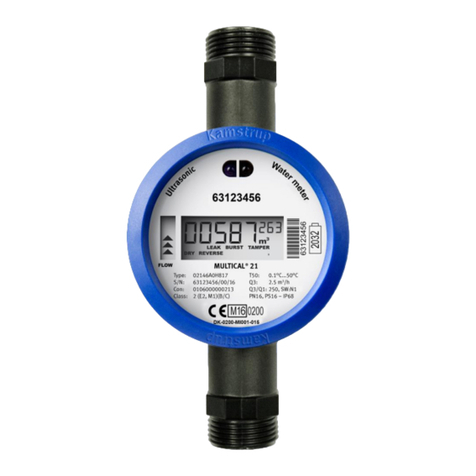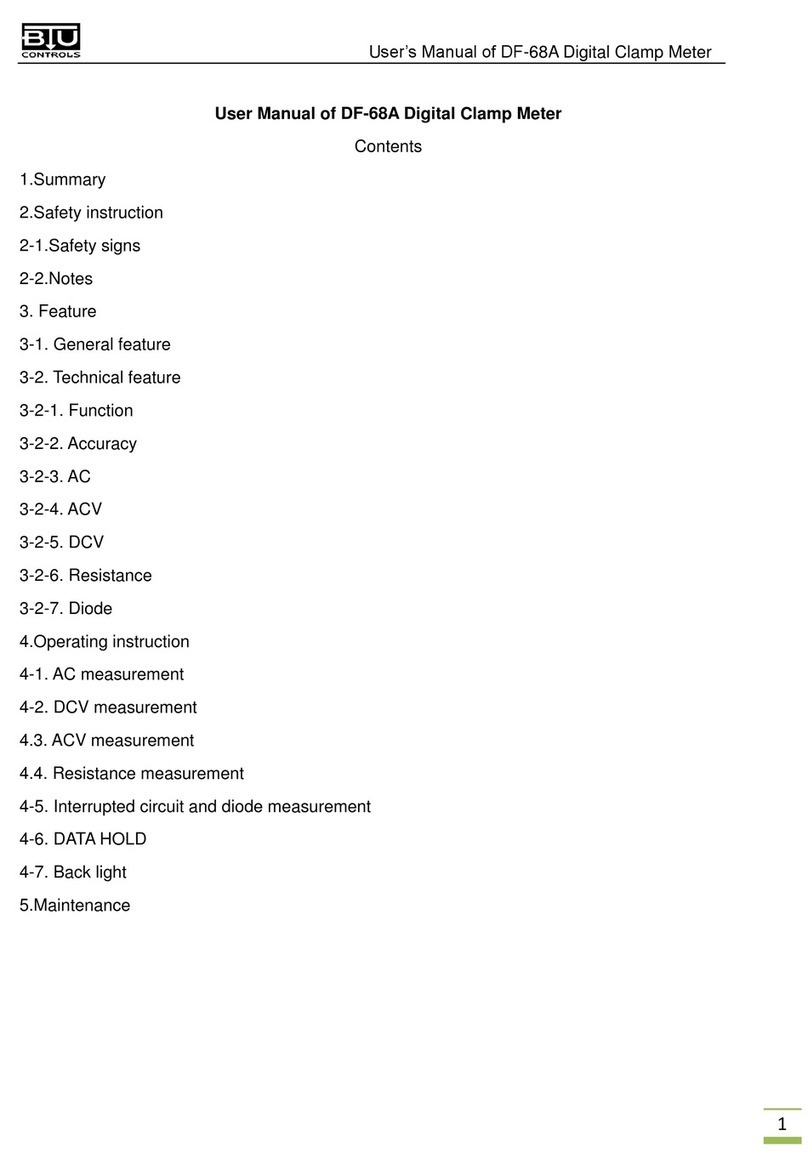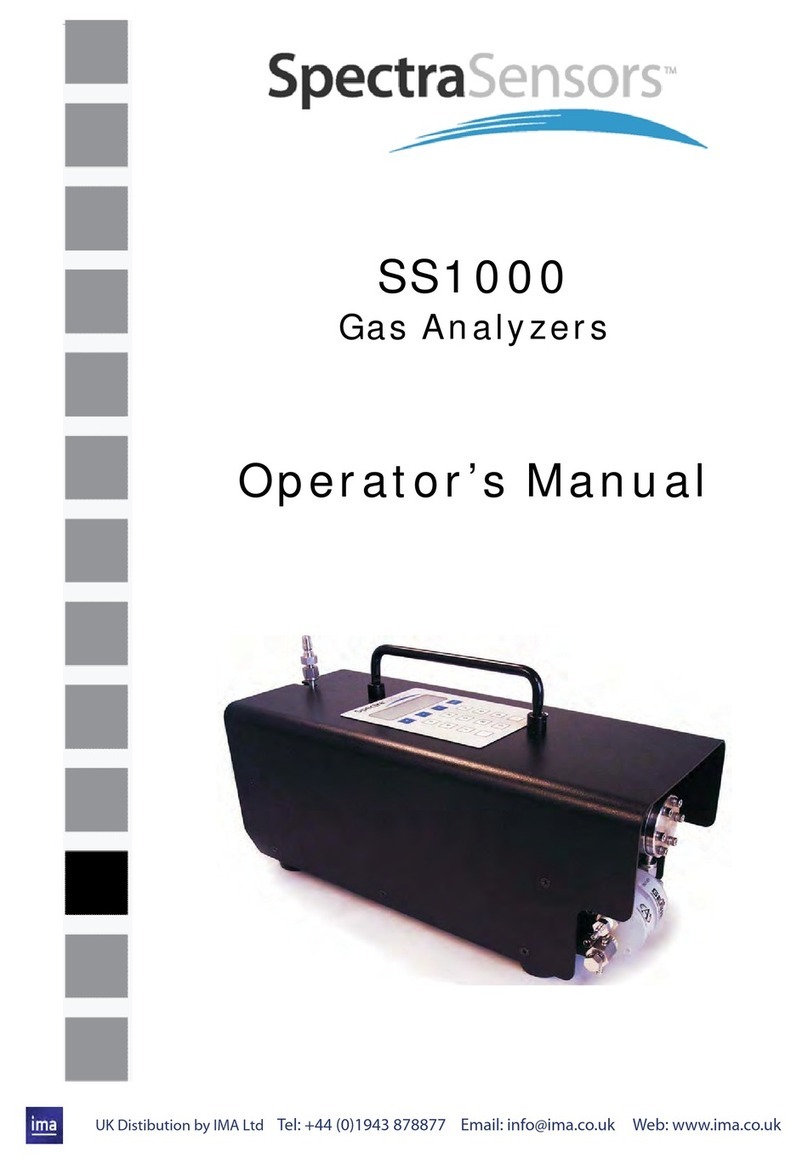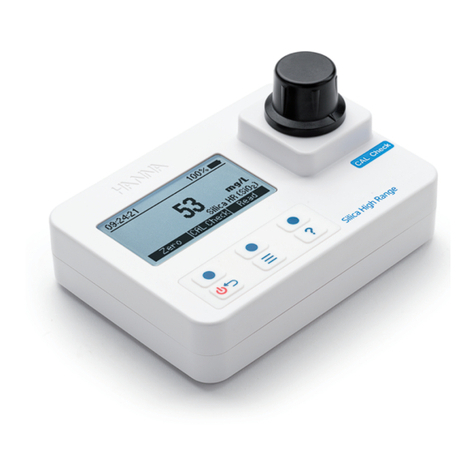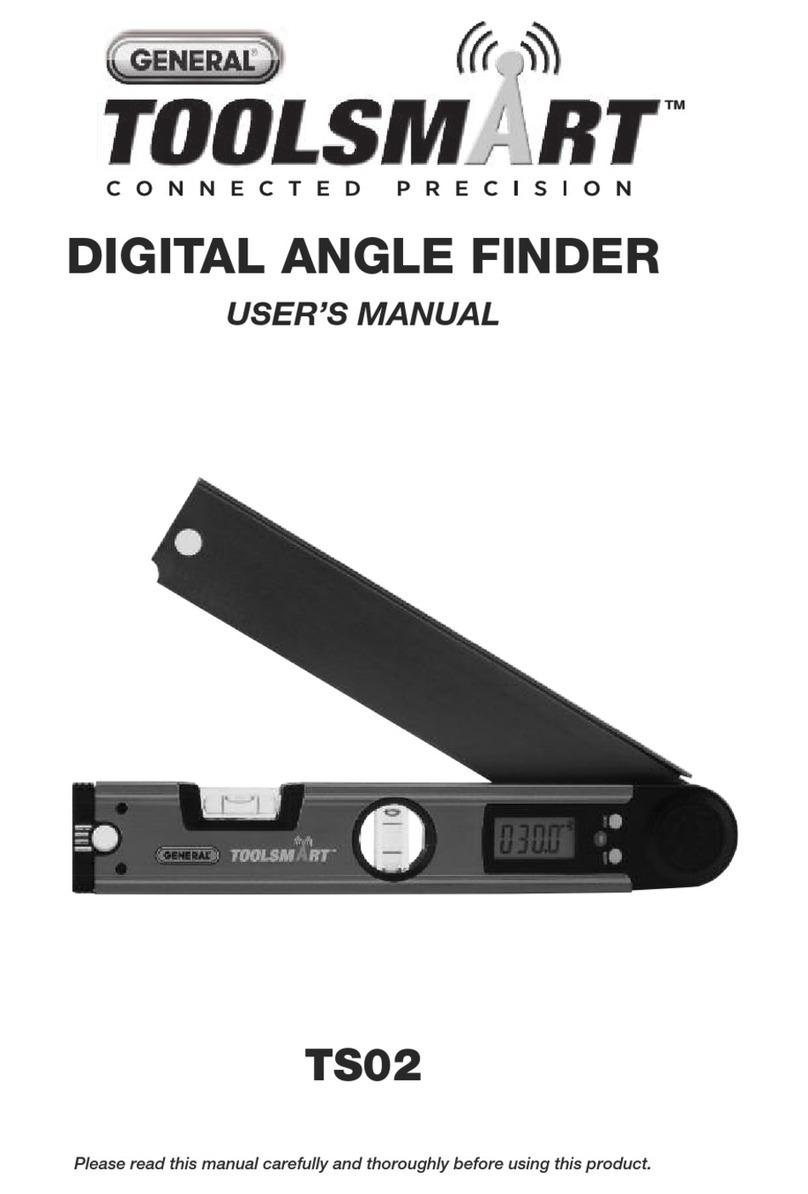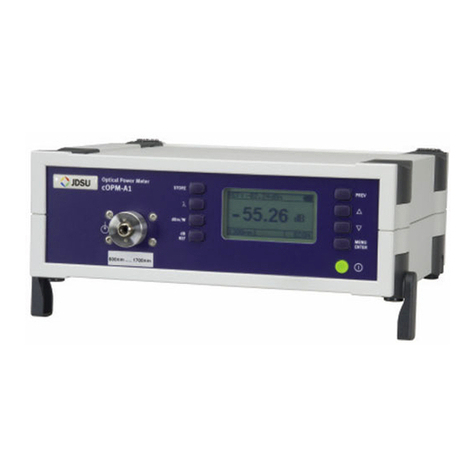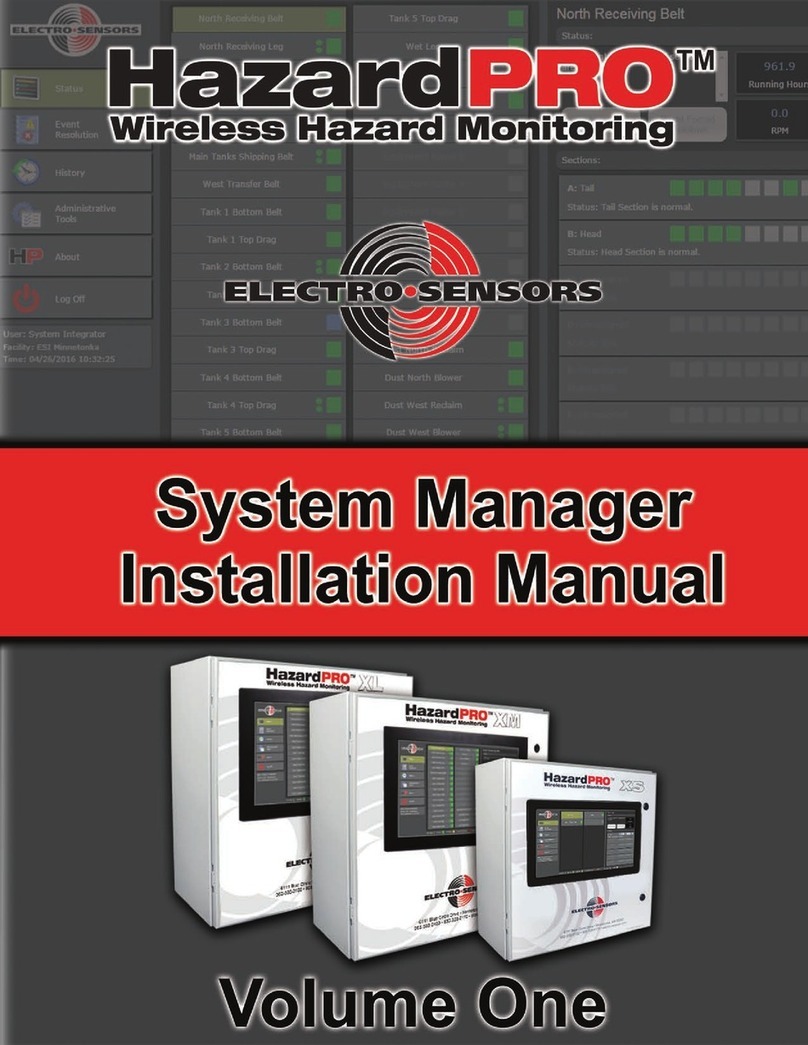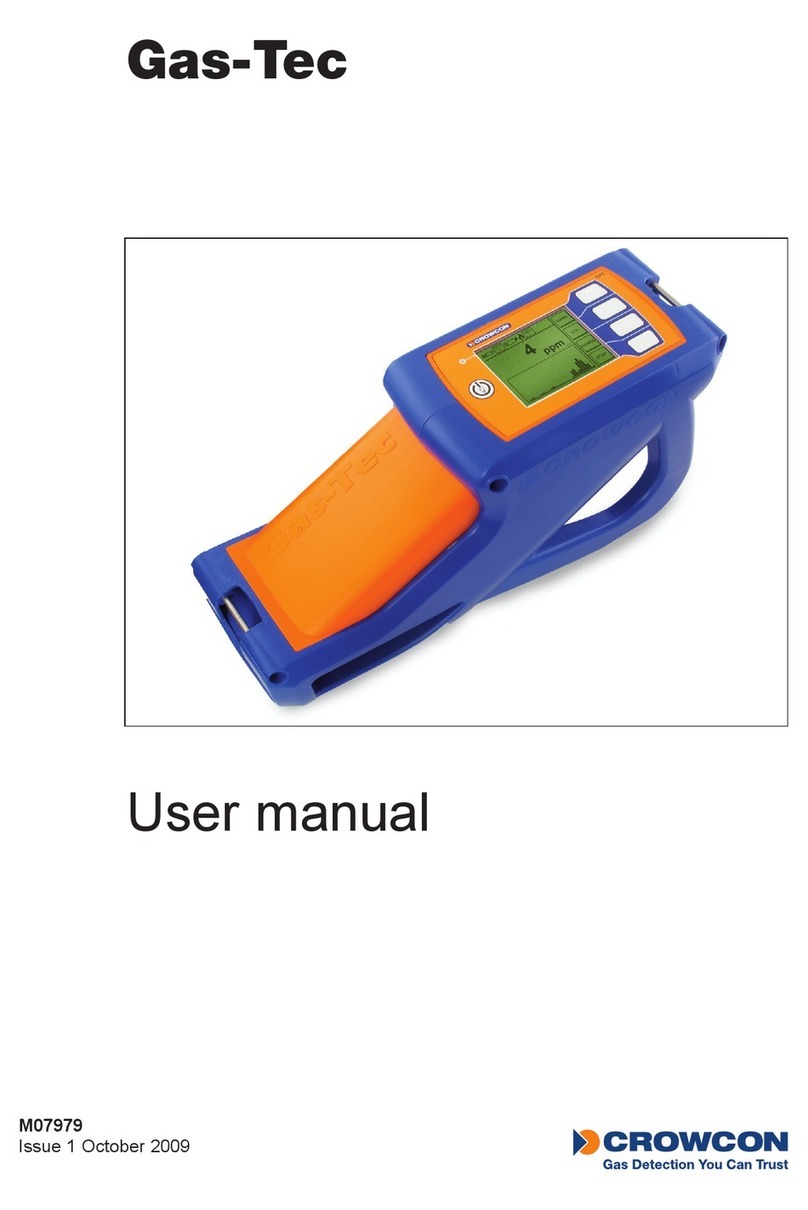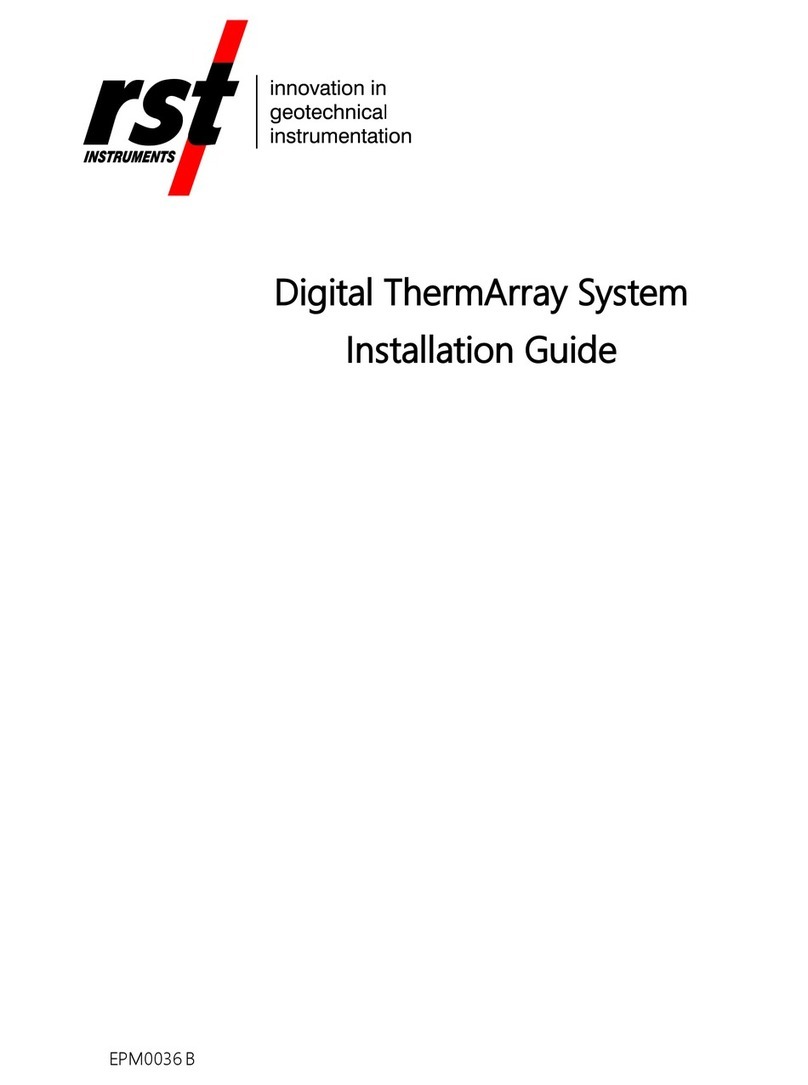SIAP+MICROS t011d TBAR Guide

t011d TBAR
Digital Barometer
User Manual and maintenance

User manual and maintenance
t011-di TBAR.docx
26/10/2023 2Vers.: 1.0
Summary
1Introduction ................................................................................................................................................ 3
2Technical specifications ............................................................................................................................. 4
3Installallation and maintenance ................................................................................................................. 5
3.1 Installation.......................................................................................................................................... 5
3.2 Maintenance ...................................................................................................................................... 5
4Electric connection..................................................................................................................................... 6
4.1 Connector output ............................................................................................................................... 6
4.2 Connection cable ............................................................................................................................... 6
4.3 Data readinding in serial (RS485 Modbus)........................................................................................ 6
4.3.1 RS485 Modbus mode .................................................................................................................... 6
5Generic information ................................................................................................................................... 7
5.1 Safety................................................................................................................................................. 7
5.2 Appropriate use of the equipment ..................................................................................................... 8
5.3 Storage .............................................................................................................................................. 8
5.4 Moving ............................................................................................................................................... 8
5.5 Disposal information .......................................................................................................................... 8
6Revision history ......................................................................................................................................... 9

User manual and maintenance
t011-di TBAR.docx
26/10/2023 3Vers.: 1.0
1Introduction
TBAR-IVS is a sensor for the measurement of atmospheric pressure which can be used for the most common
meteorological applications, thanks to its good perfomance in terms of accuracy and sensitivity. TBAR-IVS is
equipped with a piezoresistive electronic transducer with linear output. An internal electronic system
compensates automatically the variation in temperature, ensuring a high precision over the whole
measurement range. The transducer is based on a micro-processor chip that executes many functions. Mainly
it performs assuring for instance the correct control functioning, or data pre-processing and electrical signal
A/D conversion. TBAR-IVS is housed into an IP-65 box that guarantees a proper functioning of the sensor in
outdoor installations, even in harsh environmental conditions. The sensor is supplied with power and signal
cable (4m).
Ordering codes:
RS485 Modbus output: ............................................t011d-TBAR-IVS

User manual and maintenance
t011-di TBAR.docx
26/10/2023 4Vers.: 1.0
2Technical specifications
Measurement performance
Measurement range
700 ÷ 1100
Accuracy (RS485-ModBus)
0.4 (-15 ÷50°C)
Accuracy (I/V output)
0.9 (-15 ÷50°C)
Resolution
0.1
Operating conditions
Temperature
-30 ÷ +60 °C
Humidity
0 ÷ 100 RH%
Outputs
Current
4 ÷ 20 mA ↔700 ÷ 1100 hPa
Tension
0 ÷ 2 V ↔-700 ÷1100 hPa
RS485 MODBUS
Pression hPa
Power supply and Consumption
Voltage supply
7 ÷ 30 Vdc
Power consumption
Min
Typical
Max
4 ÷ 20 mA
5
25
0 ÷2 V / RS485 MODBUS
1
3
Mechanical specifications
Protective body
Plastic material IP-65 and stainless steel
screws
Electrical connections
7 male poles IP67
Dimension:
L1 – lenght: 120 mm
H1 – maximum hight: 122 mm
P1 – maximum depth: 62 mm
H2 - container height: 80 mm
D1 - fixing holes diameter: 10 mm
I1 - distance between fixing holes: 52mm
Element:
A connector
B – pressure compensator
C – fixing bracke
Weight: 350 g

User manual and maintenance
t011-di TBAR.docx
26/10/2023 5Vers.: 1.0
3Installallation and maintenance
3.1 Installation
For correct installation, the monitoring station should be placed at a distance from the closest obstacle (pylons,
trees, buildings) equal to 10 times the height of the obstacle itself.
Normally, according to WMO standards, the installation height of the sensor must be between 1.25 and 2
meters.
The sensor is provided with a fixing bracket with 2 holes with a 52mm center distance. As highlighted in the
image below, the sensor can be fixed without distinction in any position of the Siap+Micros standard support
bracket using 2 bolts.
3.2 Maintenance
This type of transducer does not require particular maintenance operations, it is advisable to periodically
check the factory calibration with sample instruments

User manual and maintenance
t011-di TBAR.docx
26/10/2023 6Vers.: 1.0
4Electric connection
4.1 Connector output
Pin
Signal
1
A-RS485
2
B-RS485
3
+0÷2 Vdc
4
+4÷20 mA
5
-4÷20 mA
-0÷2 Vdc
6
Vcc
7
GND
4.2 Connection cable
The connection cables supplied with the sensors are made with circular connectors with housing, 8 x 22 mmq
cable, shielded and ferrules for connection to the data logger terminals. The braid is connected to the general
ground lead.
Pin
1
2
3
4
5
6
7
7
Cable
Red
White
Green
Black
Orange
Yellow
Blu
Brown
Signal
A-RS485
B-RS485
+0÷2 Vdc
+4÷20 mA
-0÷2 Vdc
-4÷20 mA
Vcc
GND
GND
4.3 Data readinding in serial (RS485 Modbus)
Sensors with RS485 Modbus or SDI-12 output send data only upon specific request from the PC, data logger
or PLC.
Below are the correct communication parameters of the device performing the interrogation.
4.3.1 RS485 Modbus mode
Serial port settings: 9600 baud, no parity, 8 data bit, 1 bit di stop.
Compatible with ModBus RTU protocol, functions supported: “03 – read Holding Registers” e “04 – Read Input
Registers”.
Data type: “2 registers swapped float IEEE 754 in the form CDAB where A is the most significant byte of the
float and D is the less significant byte of the float (swapped float)”.
ID
Registers
Units
Reg. 1-2
Reg. 3-4
Reg. 5-6
Reg. 7-8
Reg. 9-10
Reg. 11-12
Reg. 13-14
5
5
mBar
-
-
Pressure
-
-
Diagnostic
Supply Voltage

User manual and maintenance
t011-di TBAR.docx
26/10/2023 7Vers.: 1.0
5Generic information
The qualitative level of our instruments is the result of a continuous evolution of the product. This may cause
differences between what is reported in the manual and the instrument you have purchased.
Siap+Micros S.p.A. reserves the right to modify without notice technical specifications and dimensions to adapt
them to the needs of the product.
5.1 Safety
Please read these safety instructions carefully before using this product:
•The warranty will be void if the product is used differently from the instructions described in this manual.
•Any sign of tampering will void the warranty
•Use the devices only according to the instructions (environmental management, operation, wiring,
installation, etc.) provided in this manual
•The correct and safe operation of the device can only be guaranteed if the transport, storage, operation
and management of the device are compliant. This also applies to product maintenance.
•The device shall not be exposed to aggressive chemicals or solvents that could damage the plastic
casing and/or corrode the metal parts.
•Maintenance should only be performed by qualified and well trained personnel.
It is appropriate to carry out a careful risk assessment in relation to the context of installation and use of the
device by the installer considering the possible meteorological station in its complexity without being limited to
the sensor.
The instruments must be installed according to the rules of the trade, with equipment that complies with
applicable regulations and using supports correctly sized by qualified technicians and designed for the specific
purpose.
During installation operations, check the suitability of the surrounding environment and compliance with local
safety regulations.
The manufacturer declines all responsibility in case of failure due to negligence of the instructions, tampering,
uses not described in this manual, improper use, use by operators not trained.
Read the instructions and intended use carefully and be sure you understand before installing the device
Before starting the activities, check the integrity of the instrument to be installed, prepare the equipment
necessary for the work and wear the necessary PPE.
Take adequate measures to prevent the access of foreign personnel (untrained and uninformed) during the
installation, maintenance or replacement of the instrument.
Take precautions to avoid falling objects, both during the installation phases and during the operation of the
instrument.
Do not perform any activity in bad weather conditions.

User manual and maintenance
t011-di TBAR.docx
26/10/2023 8Vers.: 1.0
During maintenance, particularly if the station is not frequented, visually check for the absence of dangerous
insects and, if not, use suitable insecticides.
Consider the presence of any animals near the station, if so, pay attention to them.
Use only SIAP+MICROS original spare parts.
The instrument is not classified suitable (according to Directive 2014/34/EU) for use in atmospheres with
potential explosion risk pursuant to Directive 99/92/EC.
SIAP+MICROS strives to minimize health and safety risks in all phases of the instrument's life, including
installation, use, maintenance, decommissioning and disposal.
5.2 Appropriate use of the equipment
Use the instrument for its intended purpose, do not use it for any other purpose or cause malfunctions and/or
damage.
5.3 Storage
If you do not plan to use the equipment for an extended period of time (at least one year) disconnect all cables
from the equipment, place it in a clear plastic bag along with a bag of desiccant salts and seal the bag with
tape. Put appropriate indication on the bag of the contents and weight of the equipment by inserting the wording
"HANDLE WITH CARE".
Store the instrument in an environment with a temperature between 0°C and 60°C with a humidity not
exceeding 80%. Make sure that the instrument is stored in a stable position and that it cannot be damaged or
moved by inexperience or carelessness. Do not stack other tools or weights. Do not place the instrument on
top of other instruments and in any case ensure the solidity and stability of the underlying support.
Non esporre, stoccare lo strumento in ambienti con presenza di vapori e/o gas corrosivi.
5.4 Moving
In order to avoid any damage to the device during transportation, please keep it in upright position without
shaking.
5.5 Disposal information
Electrical and electronic equipment marked with specific symbol in compliance with 2012/19/EU
Directive must be disposed of separately from household waste. European users can hand them
over to the dealer or to the manufacturer when purchasing a new electrical and electronic
equipment, or to a WEEE collection point designated by local authorities. Illegal disposal is
punished by law.
Disposing of electrical and electronic equipment separately from normal waste helps to preserve natural
resources and allows materials to be recycled in an environmentally friendly way without risks to human health.

User manual and maintenance
t011-di TBAR.docx
26/10/2023 9Vers.: 1.0
6Revision history
The following table shows the description of the changes made to this document.
Version
Date
Updates
1.0
05/06/2023
Current version of the document.
All the information content in this document are the current available at the printing phase. Siap+Micros S.p.A. reserve the rights to change
the specifications without any advance notice
Table of contents
Popular Measuring Instrument manuals by other brands
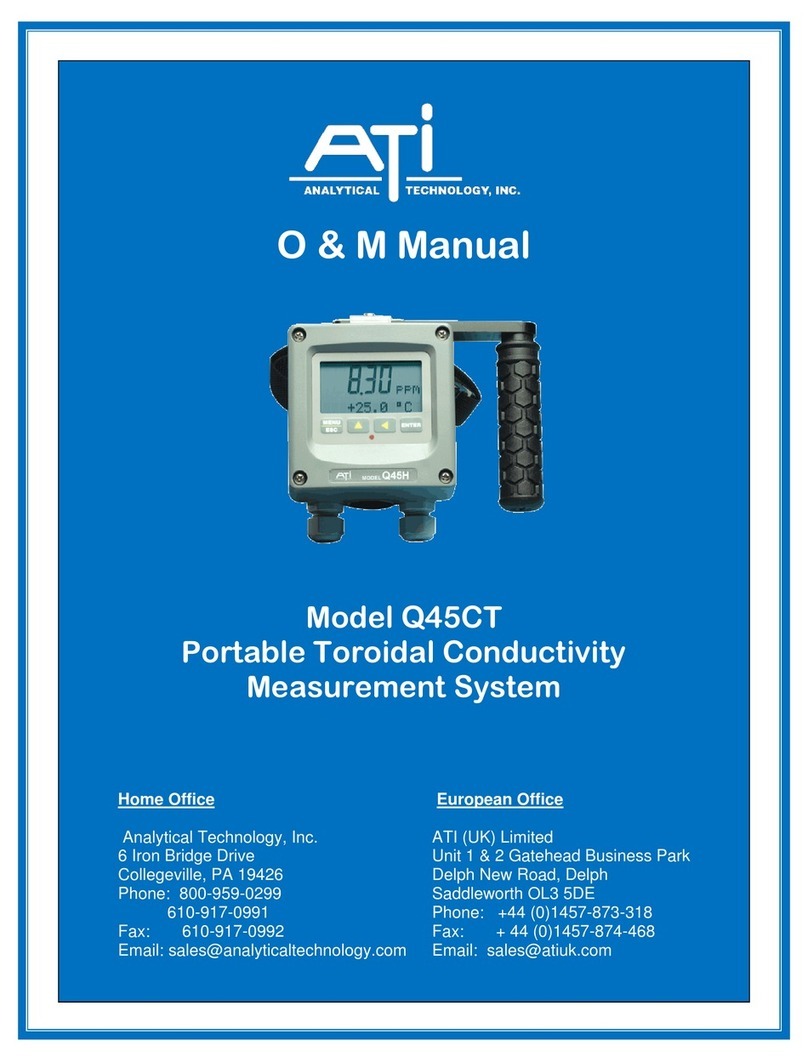
ATI Technologies
ATI Technologies Q45CT O & M Manual
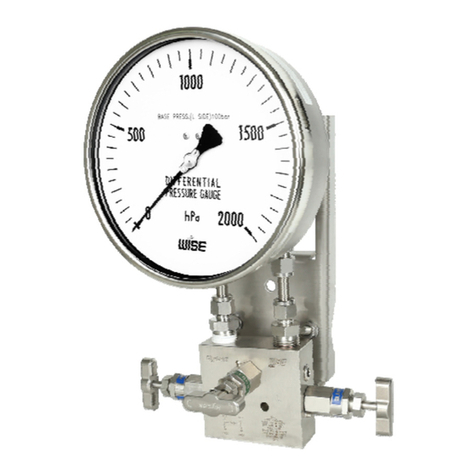
Wise
Wise P660 Series user manual

Burkert
Burkert 8026 operating instructions
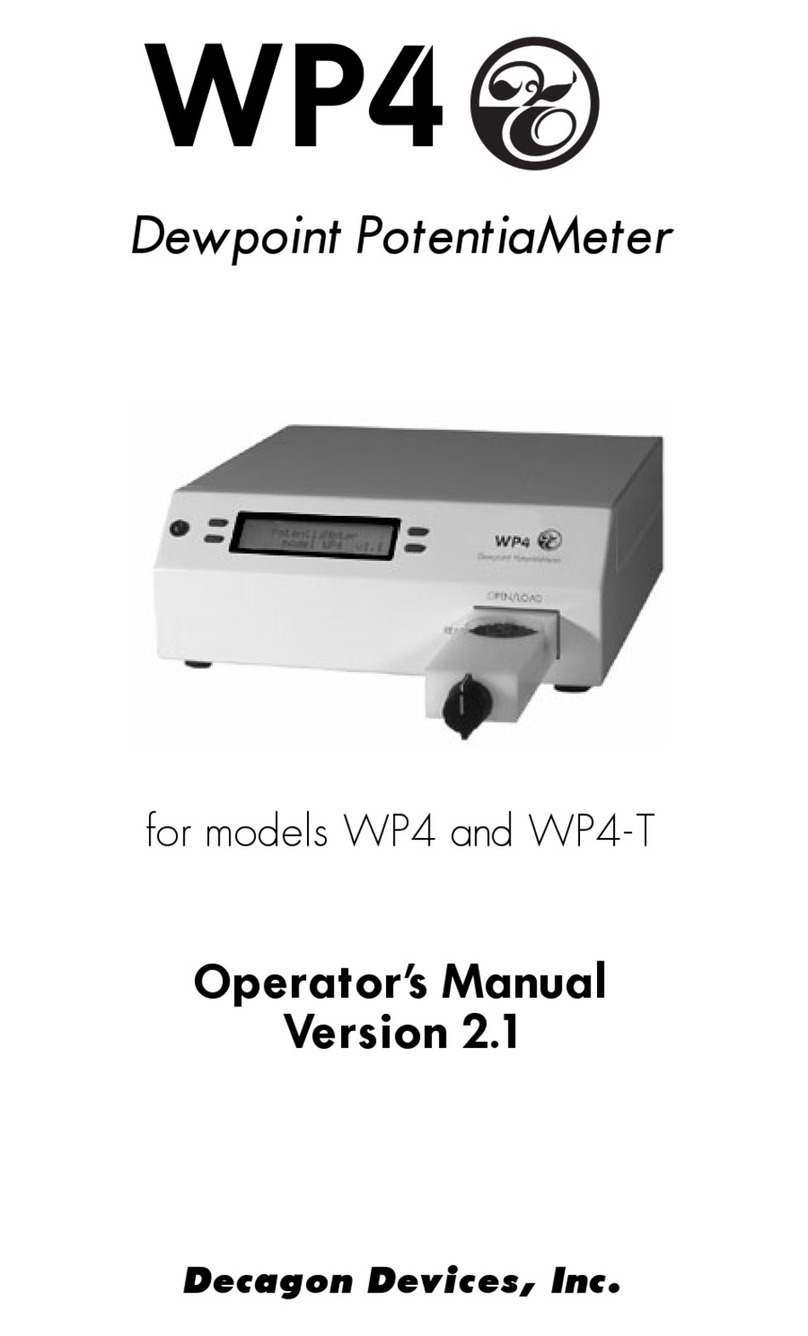
Decagon
Decagon WP4-T Operator's manual

Network Technologies Incorporated
Network Technologies Incorporated ENVIROMUX-MICRO-TRHP Installation and operation manual
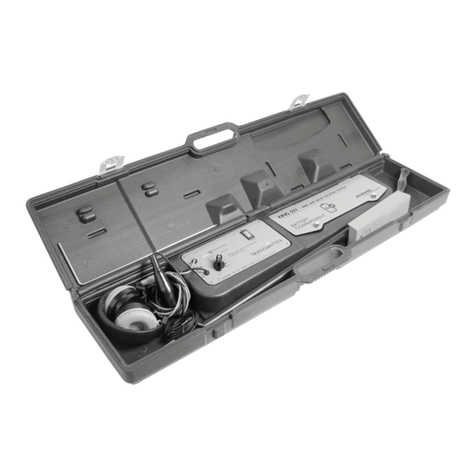
King Innovation
King Innovation 521 instruction manual
